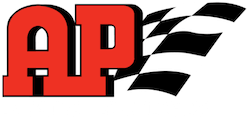Few things in trucking draw more scrutiny and scorn than a diesel engine’s after treatment system. The change from pre-Selective Catalytic Reduction (SCR) engines to modern clean diesel has been relatively painful and expensive, but OEMs and aftermarket providers have worked to ease those woes through evolutions of engineering.
“System design isn’t mandated, just the end result”
A transition to a single canister design, which allowed engineers to repackage aftertreatment components so that all the features from a dual canister setup could be placed into one, has cut almost 100 pounds out of Cummins’ system. The weight savings for Mack’s single-unit ClearTech One and Volvo Trucks’ One Box is approximately 17 pounds compared to the previous two-unit solution.
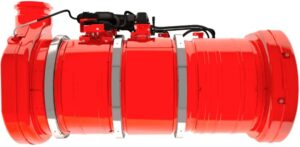
“You still have the same functionality but packaged much more efficiently in a smaller envelope,” says Jim Nachtman, marketing manager for Navistar, who uses Cummins-designed Single Module system that is designed to be up to 60 percent smaller and 40 percent lighter than the previous solutions.
Detroit’s 1-Box emissions system combines the SCR catalyst, the diesel oxidation catalyst (DOC), diesel particulate filter (DPF) and diesel exhaust fluid (DEF) into one compact component and is the longest-tenured single canister solution on the heavy-duty market.
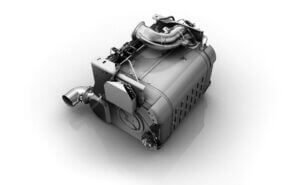
Weight savings aside, moving away from a dual canister design comes with other benefits. Trucks equipped with Mack ClearTech One get an extra 11 additional inches of frame rail space. Adding the extra frame rail space makes room for auxiliary power units and other add-ons without needing extra wheelbase. This is extremely valuable to the vocational truck market.
The smaller size also comes with service benefits. Single canister units are easier to maintain, whether that is in the removal of overall system or simply servicing it. Unlike some previous versions you can now disassemble them easily and replace just the needed components. Navistar estimates service time for the diesel particulate filter has dropped by at least 50 percent. Cummins has in effect created a side door with clamps. You can conveniently remove the shield and slide that DPF canister out.
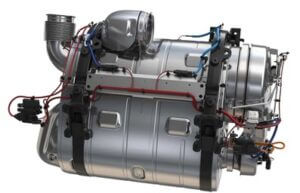
This configuration also provides and economic advantage as well. The units get hotter quicker and stays hotter longer promoting more passive regeneration and shorter time periods for active or forced regenerations. When active regen are needed, they occur with less fuel consumed.
As diesel engines continue to be refined by OEMs to further drop emissions, aftertreatment systems are likely to continue to shrink. As the engines get cleaner, the DPF will not have to filter as much PM. This should lead to even smaller aftertreatment devices.





